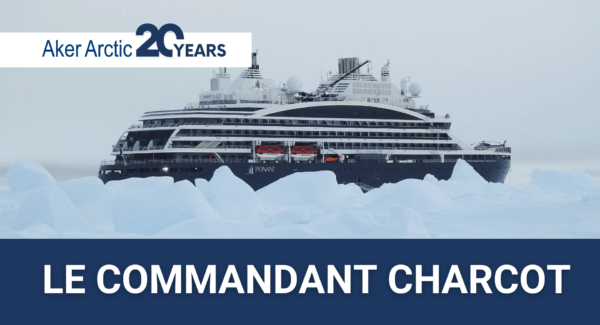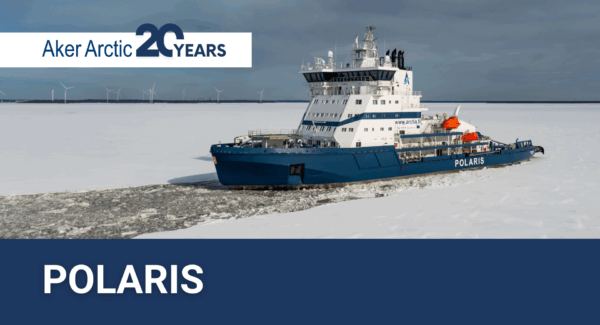Finnish icebreaker “Aino” in extensive model tests
Aker Arctic began the concept design of a new medium-class icebreaker for the Finnish Transport Infrastructure Agency in April 2025. The aim is to improve the efficiency of Finnish icebreaking operations by deploying a smaller icebreaker to the Bothnian Bay in early winter and later transferring it to the Bothnian Sea or the Gulf of Finland as conditions become more severe. With a planned service life of more than 50 years, an extensive model-testing programme is being carried out to ensure long-term success.
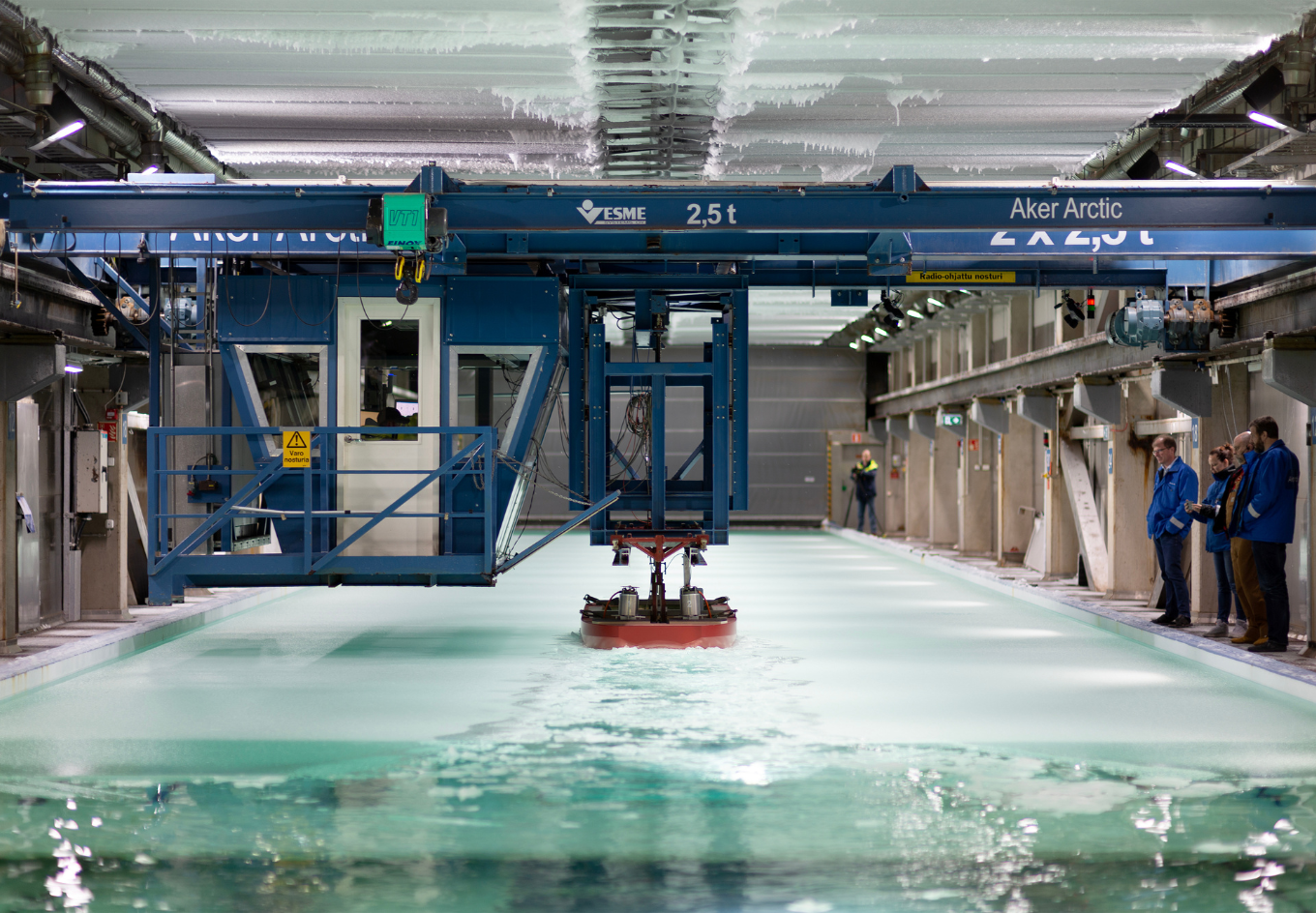
The first phase of the design work for the new icebreaker was completed before the annual summer holidays. Aker Arctic developed and evaluated three outline-level concepts with different propulsion configurations. Work on manufacturing the miniature model hulls was also started in preparation for the rigorous model tests, which began in August 2025.
Model testing ensures a successful vessel
Phase two, now underway, includes model tests in both open water and ice, as well as the preparation of tender material. The extensive model-scale testing will verify that the final icebreaker design meets the requirements of the Finnish Transport Infrastructure Agency.
“When investing in a vessel expected to serve for half a century, taking two months to evaluate and compare options is essential. This process can ultimately reduce operational costs significantly over the vessel’s service life,” says Chief Designer Tuomas Romu.
While some comparisons can be made using analytical or numerical calculation methods, Romu emphasises that the most reliable results are obtained through comparative model tests in both ice and open water.
Two concept alternatives – both featuring an azimuthing propulsion unit in the bow for improved assistance operations in the Baltic Sea – were selected for further development. A third variant with a conventional icebreaking bow will also be evaluated through model tests.
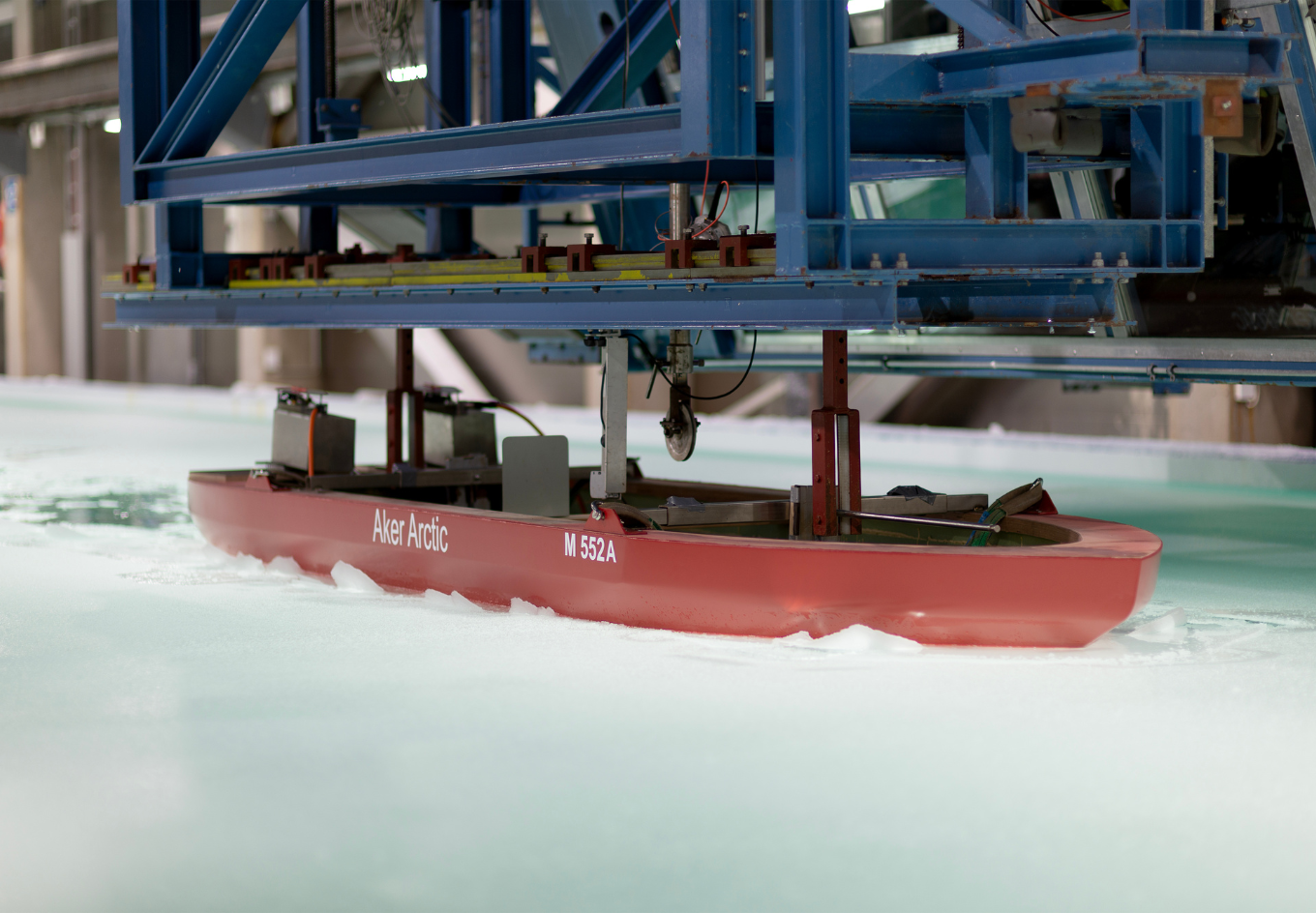
All three concepts will undergo performance tests in both open water and ice. The two designs selected for further development will additionally be evaluated for open-water manoeuvrability. Finally, one of the variants will undergo seakeeping tests.
“As all alternatives are of the same size and feature generally similar hull forms, the results from one seakeeping test can be applied to all three,” notes Romu.
Media access to rare tests
Media are rarely invited to Aker Arctic’s ice model tests, as most client projects are confidential. This time, however, the Finnish Transport Infrastructure Agency chose to allow visitors, showcasing Finland’s leading expertise in icebreaker design and testing.

A wide range of media representatives and governmental officials seized the opportunity to observe a miniature icebreaker being manoeuvred and tested in Aker Arctic’s ice laboratory. Visitors were also able to stand beneath the glass-bottom of the tank, watching how the hull bends and breaks ice before the chunks float along the vessel’s side – a remarkable experience.
“Icebreakers and Arctic operations have become a popular topic, with many countries planning new acquisitions,” Romu says. “Few people understand how the design process evolves, or the expertise needed to develop a successful concept before a vessel is ready to perform its intended tasks.”
One of the visitors to Aker Arctic was Finland’s Minister of Transport and Communications, Lulu Ranne, who, upon announcing the project in 2024, referred to the new icebreaker as “Aino”, a central female figure in the Finnish national epic, the Kalevala. It has since become the working name for the project.
New role in Finnish icebreaking
The new icebreaker’s role will be to assist commercial vessels arriving at Finnish ports during winter. Being smaller than the A-class icebreakers, it will operate at a significantly lower cost.
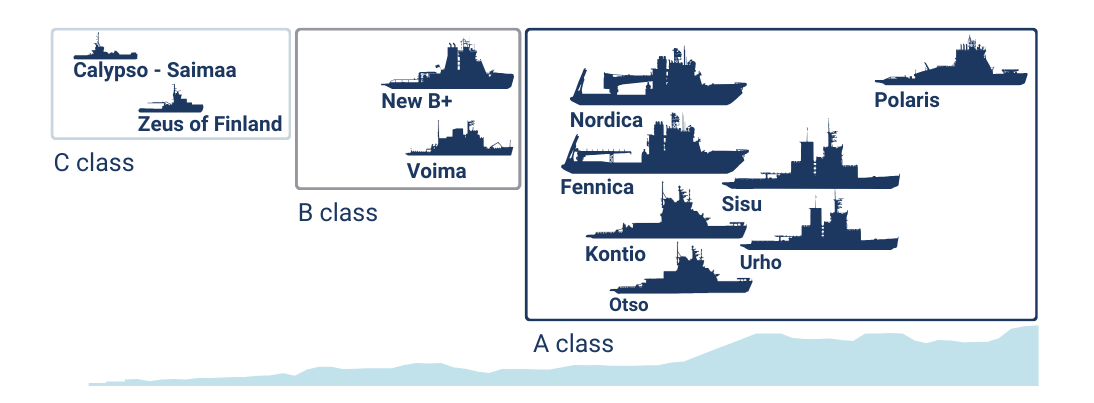
As winters in the Baltic Sea become increasingly variable – with less ice overall but more dynamic ice fields and brash ice – the new B+ icebreaker can be deployed to the Bothnian Bay in early winter, before the heavier A-class icebreakers are required. Later in the season, the vessel can operate in areas with easier ice conditions, such as the Bothnian Sea, the southern Bay of Bothnia, Kvarken, and the Gulf of Finland.
“The importance of managing thick level ice has decreased compared to previous generations of icebreakers,” explains Romu. “Instead, we have focused on developing superior manoeuvrability in thick brash ice, operability near the ice edge in challenging wind and wave conditions, and the ability to quickly and safely transfer between operational areas in harsh winter weather.”

The Finnish Transport Infrastructure Agency aims to acquire an icebreaker that is cost-efficient and environmentally sustainable. With an expected service life spanning decades, many technical choices rely on state-of-the-art solutions with a proven track record. In preparation for emerging marine fuels, the vessel’s power plant will be designed to accommodate methanol. Energy-efficiency will be further improved with a battery energy storage system and waste-heat recovery technology.
Workshops with professional mariners
In recent years, the human interface has become increasingly important in ship design. Given the long service life of an icebreaker, it must also function as a safe and comfortable workplace.
For this reason, workshops were held with professional mariners crewing on the Finnish icebreakers. Each workshop focused on a specific area of the vessel: the wheelhouse, machinery spaces, accommodation quarters, and — most importantly — the towing arrangement, which is vital for an assistance icebreaker.
“The possibility to engage actual users has led to practical improvements in many areas,” Romu says.
Government target to renew the icebreaker fleet
The Finnish government has launched a programme to renew the nation’s icebreaking fleet, beginning with Voima, Finland’s only B-class icebreaker. Voima turned 70 in 2024 and remains the world’s oldest icebreaker in active service.
The design and acquisition of the new icebreaker have been made possible through funding from the European Union’s WINMOS III programme and its continuation, WINMOS IV. WINMOS IV was granted €90 million, about half of which is earmarked for Finland’s icebreaker acquisition.
The long-standing important icebreaking cooperation between the Baltic Sea states – Finland, Sweden, and Estonia – continues under WINMOS, with all three states benefiting from the development work now underway. Sweden and Estonia are in the process of upgrading their icebreaking fleets but have slightly differing needs from Finland.

“The Finnish Transport Infrastructure Agency sees it as a natural choice to build a B+ icebreaker next, to replace the outdated Voima,” says Helena Orädd, Head of the Maritime Transport Unit at the Finnish Transport Infrastructure Agency. “We are working in an ever-changing operational environment and need a versatile icebreaker fleet, and the B+ icebreaker will always have its place. Its long operating season will make it a cost-efficient option compared to a large A-class icebreaker, which might not need to be deployed during an easy winter. During mild and easy winters, the B+ could stay in the Bay of Bothnia for the entire season.”
Delivery in 2029
According to Romu, design work is progressing ahead of schedule, with the goal of finalising tender material before the end of the year. The Finnish Transport Infrastructure Agency plans to send requests for information (RFIs) to shipyards this year, with procurement and yard selection scheduled for 2026.
The further design and construction of the new icebreaker are expected to take about three years, with delivery projected for late 2029.
“The cooperation and efficient acquisition process mirror the approach used for Polaris and provide an excellent example of how a high-quality project can be accomplished on schedule,” Romu says.
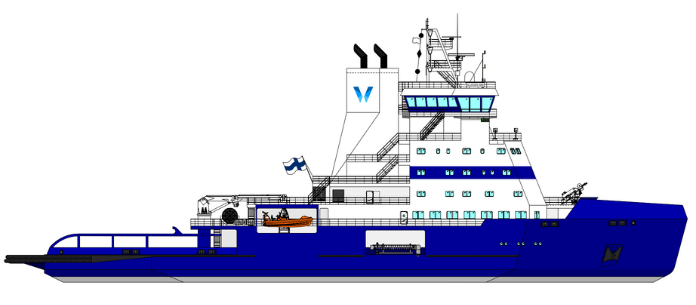
| Technical details |
|---|
Length: about 90 m |
Breadth: about 24 m |
Icebreaking draught: 7–8 m |
Displacement: About 7500 tonnes |
Hull structure: Extra high strength steel, stainless steel cladding at the ice belt |
Ice class: Polar Class 5 Icebreaker(+) |
Bollard pull: At least 120 tonnes |
Icebreaking capability: 5 knots in 0.8 m level ice |
Icebreaking endurance: 20 days |
Cabins: 18 crew and 12 passengers |
Why the design phase matters
Investing in an icebreaker with a 50-year service life should never be rushed. Spending a few weeks evaluating options will repay itself multiple times through lower fuel and maintenance costs.
“In this project, for example, the ice model tests included assistance trials in which we outfitted the icebreaker models with a scaled-down towing notch and used them to tow another vessel in our ice tank,” Romu explains. “This allowed us to evaluate the impact of propulsion configuration on a critical operational capability of a Baltic Sea assistance icebreaker. Visual observations are also an important part of model testing.”
At the same time, the customer gains valuable insights that can be applied to future projects.
“The Finnish Transport Infrastructure Agency is planning to renew the way icebreaking operations are organised and scheduled during winter. They want to be certain that their new acquisition meets all targets. Achieving that requires thorough background work,” Romu adds.
Text: Catarina Stewen
